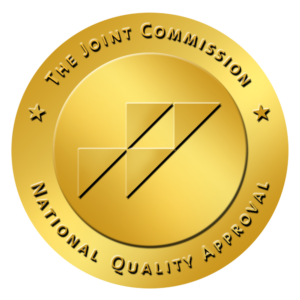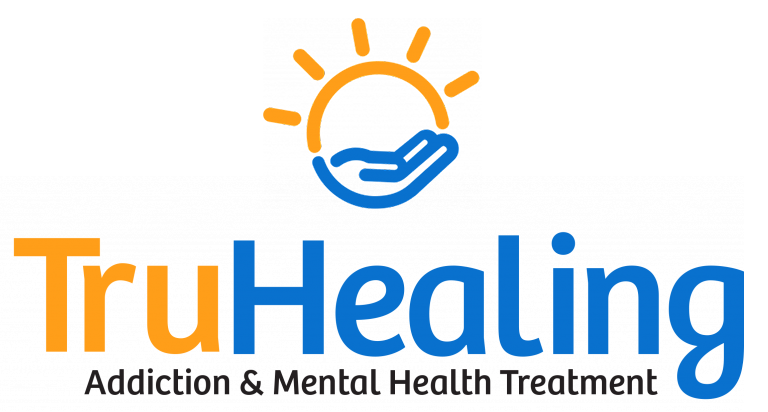Glossary of Mental Health Terms
12-Step Program:
A fellowship of people in recovery from substance abuse, behavioral addictions, traumatic experiences, and compulsions. People in 12-step programs work through the steps with a sponsor, share their stories, and support one another in recovery.
A
Acetaminophens:
Pain relievers like Tylenol are used to alleviate mild to moderate pain and are typically purchased over the counter. These pills may be used to treat things like headaches, muscle aches, and fever.
Affinity:
The strength at which a drug binds to the body’s receptor.
Agonist:
A drug that activates a receptor in the brain. For instance, full opioid agonists bind to and activate the brain’s opioid receptors.
Alkaloids:
Plant-produced organic compounds that have nitrogen in them. They are the active ingredients in many drugs, such as morphine, cocaine, nicotine, caffeine, and methamphetamine, as well as poisons like atropine and strychnine.
Alternative Therapy:
Also sometimes called complementary therapy, this is an alternative approach to mental health care that emphasizes the interrelationship between mind, body, and spirit. Although some alternative approaches have a long history, many remain controversial. This type of therapy is often most effective when used in tandem with traditional treatments.
Amphetamine:
Typically used in the treatment of attention deficit hyperactivity disorder (ADHD), narcolepsy, and obesity, amphetamine is a central nervous system stimulant. It can be used legally as a prescription drug, or illegally without a prescription to get high. (Adderall is an example of a prescribed Amphetamine).
Analgesic:
An analgesic drug or painkiller is any drug used to relieve pain.
Anorexia:
Anorexia is an eating disorder characterized by food restriction, intense fears of weight gain, and distorted body image. It has the highest mortality rate of any psychiatric illness, as inadequate calorie intake and/or excessive energy expenditure can result in life-threatening damage to the body and metabolism. Supportive care by health care providers, structured behavioral therapy, psychotherapy, and anti-depressant drug therapy are some of the most common treatment methods. Despite stereotypes perpetuated by the media, anyone—regardless of gender, race, or sexuality—can develop Anorexia.
Anosognosia:
Anosognosia is when someone is unaware of their mental health condition or has a distorted perception of it. It typically means an individual does not realize they have a mental health issue or is unaware of its extent. According to the National Alliance on Mental Illness, about 30% of people with schizophrenia and 20% of people with bipolar disorder have a “severe” lack of awareness of their mental health disorder.
Antagonist:
A substance that can void other drugs’ effects. For instance, opioid antagonists like Naltrexone attach to the opioid receptors but do not activate them, which blocks opioids from producing any response in the body. It is the opposite of an opioid agonist.
Antidepressant:
Medications that are used to treat and alleviate the symptoms of major depressive disorders. They can also be used to treat anxiety disorders and some chronic pain conditions, as well as to help manage some addictions. Some examples of antidepressants include Zoloft, Prozac, Lexapro, and Wellbutrin.
Antipsychotic:
A type of medication used to manage psychosis. They also work together with mood stabilizers in treating bipolar disorders.
Antisocial Personality Disorder:
A personality disorder characterized by a lack of regard for others, manipulative or aggressive behavior, and an inability to maintain long-term social and personal relationships.
Anxiety Disorders:
A mental health disorder in which a person feels persistent worry, fear, or dread, sometimes accompanied by physical symptoms like rapid heartbeat, stomachaches, shakiness, or insomnia. Anxiety is common in children and adolescents.
Aspirin:
A drug that is used to relieve pain, reduce fever, or lessen inflammation.
Assessment:
A professional evaluation of a person’s medical and substance use history, current health status, and overall physical and mental health condition.
Attention Deficit Hyperactivity Disorder (ADHD):
Attention-deficit/hyperactivity disorder, sometimes called ADHD, is a chronic condition involving inattention, restlessness, hyperactivity and/or impulsivity. It is the most diagnosed behavioral disorder among children and adolescents but occurs in both children and adults. It affects between 3 and 5 percent of school-aged children in a 6-month period. Children and adolescents with attention-deficit/hyperactivity disorder may have difficulty controlling their behavior in school and social settings. Although some of these young people may not earn high grades in school, most have normal or above-normal intelligence.
Autism:
A neurodevelopmental condition characterized by struggles with social cues, communication, sensory processing, and repetitive behaviors.
Auditory Hallucinations:
Hearing noises without an external stimulus.
Average Length of Stay:
This represents the average time clients receive a particular service during a specified period.
Avoidant Personality Disorder:
A personality disorder characterized by anxiety in social situations and personal relationships, with feelings of inadequacy and extreme sensitivity to rejection or criticism.
Axon:
Part of the neuron which sends signals to nearby neurons.
B
Behavioral Problems:
A pattern of maladaptive behaviors that can cause difficulties in a person’s life.
Behavioral Therapy:
A broad range of techniques used to change maladaptive behaviors. The goal is to reinforce desirable behaviors and eliminate unwanted ones. Behavioral therapy focuses on the behavior itself as the problem; the goal is to teach people new behaviors to minimize or eliminate the issue.
Binge Eating Disorder:
When a person frequently consumes excessive amounts of food in one sitting and feels that their eating behavior is out of control. It is a severe, life-threatening, and treatable eating disorder characterized by recurrent episodes of binge eating.
Bioavailability:
A drug’s ability to be absorbed by the body and take effect.
Biofeedback:
This is a mind-body therapy that helps people gain awareness of many physiological functions like heart rate, muscle tension, blood pressure, brain activity, etc. During a session, clients are hooked up to electrical sensors that help them understand their physiological reactions so that they can control certain responses; for instance, people can adjust their muscles to reduce pain or alter their breathing to impact their hear rate.
Biomedical Treatment:
Any treatment involving medicine and/or medical treatment is a biomedical treatment. The kind of medication a psychiatrist prescribes varies with the disorder and the individual being treated.
Biopsychosocial:
A clinical model that seeks to understand the biological, psychological, and social factors—and their complex interactions—that contribute to development, diseases, and mental health.
Bipolar Disorder:
A disorder that causes severe and unusually high (called mania) and low (called depression) shifts in mood, energy, and activity levels as well as unusual shifts in the ability to carry out day-to-day tasks.
Body Dysmorphic Disorder:
Excessive preoccupation with either a small or imagined defect in one’s physical appearance.
Borderline Personality Disorder:
A mental health disorder impacts the people feel about themselves and others. It is characterized by unstable moods, intense fear of abandonment, impulsive behavior, and difficulty forming stable personal relationships.
Boundary:
The limits and rules we set for ourselves or others within a relationship.
Bulimia Nervosa:
Bulimia nervosa is an eating disorder characterized by excessive eating, followed by purging. People who have bulimia will eat an excessive amount of food in a single episode and almost immediately make themselves vomit or use laxatives or diuretics to get rid of the food in their bodies. Like people with anorexia, people with bulimia have an intense fear of gaining weight.
C
Caregiver:
A person who has special training to help people with mental health problems. Examples include social workers, teachers, psychologists, psychiatrists, and mentors.
Case Management:
This is a process by which a care team assists a client in arranging appointments, connecting to relevant resources, monitoring their healthcare plan, and more. The care team advocates for the client to receive appropriate medical care and other needed services.
Central Nervous System (CNS):
This consists of the brain and spinal cord and is one of two parts that make up the nervous system. The central nervous system coordinates body movements. It is through this system that we experience thoughts, feelings, and sensations.
Child Psychiatrist:
A physician who specializes in the diagnosis and treatment of mental health disorders in children and adolescents under the age of 18.
Child Protective Services:
This is designed to keep a child safe in the case of suspected abuse, neglect, or abandonment, or when there is no family to take care of the child. The goal is to keep the child with the family whenever possible. However, if in-home support is insufficient, the child may be removed from the home on a temporary or permanent basis.
Children and Adolescents at risk for Mental Health problems:
Children who have experienced abuse, neglect, stress, discrimination, poverty, loss of a loved one, exposure to violence, and other traumas are at greater risk for developing mental health disorders. The Adverse Childhood Experiences (ACEs) test has found that the more stressful or traumatic experiences a child is exposed to, the greater their risk of mental and physical health issues.
Child Psychologist:
A trained professional who provides treatment to children with mental health issues.
Chronic:
A chronic illness persists for a long time or consistently recurs. Many chronic illnesses are life-long but can be managed with treatment.
Clinical Decision Support:
A system that provides health care professionals, staff, patients, or other individuals with knowledge and person-specific information to enhance health and health care.
Clinical Psychologist:
A licensed psychologist with an advanced degree who assesses, diagnoses, and treats mental, emotional, and behavioral issues.
Clinical Social Worker:
Provides mental health services for the prevention, diagnosis, and treatment of mental, emotional, and behavioral disorders in individuals, families, and groups.
Codependency:
A relationship that is codependent is one in which both people rely on each other in a way that is unhealthy. Typically, one person requires extra support due to an illness or addiction, and the other person spends an excessive amount of time taking care of them. Both feel dependent on one another.
Cognition:
Conscious mental activities, such as thinking, communicating, understanding, solving problems, processing information, and remembering.
Cognitive Impairment:
Cognitive impairment is when a person experiences issues in their ability to think, process information, remember, learn, or other cognitive processes. Examples include memory loss and trouble concentrating, completing tasks, understanding, and solving problems.
Cognitive behavioral therapy (CBT):
A type of therapy that helps people understand and change the negative thought processes that can lead to harmful behaviors.
Collateral Services:
Services that include the loved ones in a client or patient’s life. This includes helping significant people in the client’s life understand their condition and how to support them.
Community Services:
A system of care provided by a person’s community, rather than in a traditional healthcare setting.
Compulsion:
A psychological condition in which a person has difficulty controlling an urge to carry out a specific behavior, despite wanting to stop.
Conduct Disorder:
A repetitive and persistent pattern of behavior among teenagers in which they violate the rights of others or violate norms or rules that are appropriate to their age.
Continuum of Care:
A system in which a client or patient moves through the various stages of treatment over time.
Coping Skills:
Coping skills are the strategies people use to help manage painful emotions, trauma, or stress. They can help people adjust to stressful events while maintaining their emotional well-being. Coping skills are often learned and practiced over time.
Crisis Intervention:
Urgent and temporary care to individuals who are experiencing mental, emotional, mental, or physical distress.
D
Delusions:
A belief a person persistently holds that goes against what is accepted as reality when there is considerable evidence to the contrary.
Dementia:
A chronic or persistent disorder marked by loss of cognitive function, such as memory loss, personality changes, and impaired reasoning.
Denial:
The failure to either admit or realize one’s addiction or mental health disorder, or to recognize and accept the harm it can or has caused.
Depression:
A mental health disorder characterized by persistent and intense sadness or loss of interest in activities, causing significant impairment in daily life.
Developmental Disabilities:
Impairment in intellectual functioning, language and communication, or learning.
Diagnostic Evaluation:
The aims of a psychiatric diagnostic evaluation are: 1-to establish a psychiatric diagnosis, 2- to collect data to help establish the best care plan,and 3- to develop an initial treatment plan, or to reassess a previously established one.
Discharge:
The formal termination of treatment when it has been completed or due to administrative authority.
Dopamine:
A neurotransmitter found in the brain that motivates people to repeat a behavior deemed pleasurable. The brain includes several distinct dopamine pathways, one of which plays a role in reward-motivated behavior.
DSM:
The Diagnostic and Statistical Manual of Mental Disorders (DSM) is the handbook that is the standard for diagnosing mental health disorders. It is written by the American Psychiatric Association and was first published in 1952, with new volumes being regularly released as added information becomes available. The most recent version, the DSM-5-TR, was published in March 2022.
Dual-Diagnosis:
Dual diagnosis, also referred to as co-occurring disorder or comorbidity, is the condition of having a mental illness along with a substance use disorder.
Dyslexia:
A learning disability that impacts a person’s ability to read accurately.
Dysphoria:
A state of feeling intensely uneasy or dissatisfied with life. The opposite of euphoria.
E
Early Intervention:
A process that helps recognize early warning signs for mental health problems and takes preventative measures, such as teaching children healthy ways to manage stress. An Early intervention can help children get better in less time and can prevent problems from becoming worse.
Eating Disorder:
An unhealthy pattern of eating characterized by preoccupation with food and distorted body image.
Electroconvulsive Therapy (ECT):
A medical treatment, mostly used in patients with depression or other mental health disorders that have not responded to other treatments, in which small electrical currents are sent through the brain. This is done to prompt changes to brain chemistry that may help alleviate mental health disorder symptoms.
Emergency and Crisis Services:
A group of services that are available 24 hours a day, 7 days a week, to help during a mental health emergency. Examples include telephone crisis hotlines, suicide hotlines, crisis counseling, crisis residential treatment services, crisis outreach teams, and crisis respite care.
Eye Movement Desensitization and Reprocessing (EMDR):
A type of therapy that helps alleviate distress from traumatic memories. . After successful treatment with EMDR therapy, affective distress is relieved, negative beliefs are reformulated, and physiological arousal when exposed to a traumatic memory is reduced.
Euphoria:
A feeling of elation or an extreme, unrealistic sense of feeling “high.”
Evidence-based Treatment (EBT):
Scientifically backed treatment in which extensive research has been documented and the treatment has been proven successful. The goal of EBT is to encourage the use of safe and effective treatments likely to achieve results and lessen the use of unproven, potentially unsafe treatments.
F
Food and Drug Administration (FDA):
A federal agency of the Department of Health and Human Services that administers federal laws regarding substances and protects public health.
G
Gender:
The socially constructed roles, expressions, and identities of women, men, and genderdiverse people.
Gender Dysphoria:
The feeling of discomfort or distress that people might experience when their gender identity differs from their sex assigned at birth or their sex-related physical characteristics.
Group Therapy:
A form of therapy conducted in a group setting under the supervision of a therapist.
H
Hallucinations:
A perception of having seen, heard, touched, tasted, or smelled something that was not there.
HIPAA:
Health Insurance Portability and Accountability Act. www.HIPAA.gov
Healthcare system:
Providers, institutions, and resources that deliver healthcare services.
Home-Based Services:
Help provided in a family’s home either for a defined period or for as long as it takes to deal with a mental health problem. Examples include parent training, counseling, and working with family members to identify, find, or provide other necessary help.
I
Impulsivity:
A problem with emotional or behavioral self-control.
Individualized Therapy:
One-on-one therapy that is individualized for the client.
Inpatient Hospitalization:
Mental health treatment that is provided in a hospital setting 24 hours a day.
Inpatient Treatment:
Intensive, 24-hour-a-day services.
Intake/Screening:
Services designed to briefly assess the type and degree of a client’s/patient’s mental health condition to determine whether services are needed and to link him/her to the most appropriate and available service. Services may include interviews, psychological testing, physical examinations including speech/hearing, and laboratory studies.
Intensive Case Management:
Services for individuals with severe and persistent mental illness that help connect them to resources and support, advocate for themselves, and carry out a treatment plan.
Intensive Residential Services:
Mental health or substance use care provided in a housing setting. May include medical, psychosocial, vocational, recreational, or other support services.
Interpersonal Psychotherapy:
A time-limited therapy based on attachment theory that centers on resolving interpersonal problems and symptomatic recovery. For example, a person might notice that their depression developed after a breakup. The therapist will develop an “interpersonal inventory” that reviews the client’s pattern of behavior in relationships and an evaluation of the client’s current relationships.
Intervention:
The act of confronting a problem in someone else’s life in the hopes of creating positive change.
L
Legal Advocacy:
Legal services provided to ensure the protection and maintenance of a client’s/patient’s rights.
Length of Stay:
The number of days an individual stays in a hospital or inpatient facility.
Levels of care (LOC):
The intensity of services required to meet a person’s mental health needs.
Limbic System:
Emotional control center of the brain.
M
Maintenance:
Monitoring of a patient who is taking psychotropic medication indefinitely to ensure the drug is still effective.
Maintenance Medications:
Medications prescribed for chronic, long-term conditions and that are taken on a regular basis.
Mania:
A symptom of bipolar disorder characterized by extreme excitement or euphoria, physical overactivity, rapidly changing ideas, and intense impulsivity. A person in a manic state may also have delusions.
Medically Necessary:
Healthcare services that need to take place to treat a condition or its symptoms, and that meet accepted standards of medicine.
Medication Therapy:
Prescription, administration, assessment, and monitoring of psychotropic medications.
Mental Disorders:
Also known as mental illness. A wide range of conditions that affect mood, thinking, and behavior.
Mental Health:
Encompasses emotional, psychological, and social well-being. It influences how one thinks, feels, and behaves. It also determines how an individual handles stress, interpersonal relationships, and decision-making.
Metabolism (of drugs):
The chemical and physical reactions carried out by the body in response to ingesting a drug.
Monotherapy:
Therapy using one drug to treat a disease or condition.
N
Negative Reinforcement:
A method of removing an unpleasant stimulus if a desired behavior is displayed to reinforce that behavior.
Neurotransmitter:
Endogenous chemicals in the nervous system that allow neurons to communicate with each other and that influence mood, heart rate, muscle movement, and many other functions.
O
Obsession:
An idea or thought that continually preoccupies or intrudes on a person’s mind. (e.g., needing an alcoholic drink).
Obsessive Compulsive Disorder (OCD):
People with OCD have obsessions and/or compulsions. An obsession refers to recurrent and persistent thoughts, impulses, or images that are intrusive and cause severe anxiety or distress. Compulsions refer to repetitive behaviors and rituals (like hand washing, hoarding, ordering, checking) or mental acts (like counting, repeating words silently, avoiding) performed to quiet the obsessions.
Occupational Therapists:
Occupational therapists help people with physical or mental health conditions adapt to their environment and to cope with their daily life. OTs may work in hospitals or in the community.
Off-Label Use:
Physician-approved use of a drug for conditions other than those stated on its label.
Orthorexia Nervosa:
An extreme focus on eating in a healthy way and an intense avoidance of foods the person considers harmful.
Outpatient Treatment:
Treatment that does not require the patient to stay overnight.
P
Panic Disorder:
An anxiety disorder that causes regular, sudden panic attacks will cause physical symptoms such as increased heart rate, sweating, or fast breathing.
Paranoia and Paranoid Disorders:
A mental condition characterized by delusions of persecution and intense mistrust of others. It may be an aspect of chronic personality disorder, of drug abuse, or of a serious condition such as schizophrenia in which the person loses touch with reality.
Peer Support:
Structured relationships in which people meet to provide or exchange emotional support with others facing similar challenges. The group does not necessarily need to have healthcare providers among its members. Examples of peer to peer groups are AA, NA, SMART Recovery, and online forums. Peer support by itself does not constitute treatment but is one of many tools that make up a treatment plan. It should be used in conjunction with professional therapy and/or medication as part of a comprehensive treatment plan.
Person-Centered Care:
Person-centered care means that a client’s values, goals, and preferences guide all aspects of their health care. Person-centered care is achieved through a dynamic relationship between individuals, others who are important to them, and all relevant providers.
Pharmacology:
The study of the uses of drugs and their effects on the body. This includes drug origin, composition, pharmacokinetics, therapeutic use, and toxicology.
Phobias:
Phobias are irrational and specific fears that lead people to avoid things or situations that trigger anxiety. There are many types of phobias. For example, agoraphobia is the fear of being in any situation that might trigger a panic attack and from which escape might be difficult; social phobia is a fear of being extremely embarrassed in front of other people.
Physical Abuse:
Generally defined as any intentional physical injury to another person.
Pica:
An eating disorder characterized by the desire to eat non-food substances such as paper, dirt, or hair. Temporary periods of eating inappropriate objects are common in childhood; symptoms must be present for more than a month and must be developmentally inappropriate.
Placebo:
A substance with no pharmacological elements that may elicit a reaction because of a patient’s belief in its effects. Used as a control in testing new drugs.
Postpartum Depression:
Depression that occurs after childbirth. Symptoms may include insomnia, loss of appetite, intense irritability, mood swings, crying spells, and difficulty bonding with the baby.
Post-Traumatic Stress Disorder (PTSD):
A disorder in which a person has difficulty recovering after experiencing or witnessing a terrifying event. The condition may last months or years, with triggers that can bring back memories of the trauma accompanied by intense emotional and physical reactions. Symptoms may include nightmares or unwanted memories of the trauma, avoidance of situations that bring back memories of the trauma, heightened reactions, anxiety, or depressed mood.
Practitioner:
A person who practices a profession or art. Anyone licensed to provide healthcare services.
Primary Care:
Day-to-day healthcare by a provider who is often the first point of contact for any health issue.
Pre-Existing Condition:
A medical condition existing at a time when a person applies for insurance. Typically, the cost of treating this condition is not covered by insurance.
Prior Authorization:
The approval a provider must obtain from an insurer before carrying out certain health services for the service to be covered under the plan.
Psychiatrists:
A practitioner specializing in the diagnosis and treatment of mental health disorders, particularly in regards to medication.
Psychoanalysis:
A type of therapy that focuses on a person’s feelings and past to help investigate the interaction of conscious and unconscious elements in the mind.
Psychopharmacology:
The study of how drugs affect consciousness, mood, sensation, thinking, and behavior.
Psychotropic Drug:
Any drug that impacts the mind, emotions, mood or behavior. Typically used to describe medications for mental health disorders.
R
Recovery:
The process of healing from a mental health or substance use disorder. This is a process of change through which individuals improve their health and wellness, live a self-directed life, and strive to reach their full potential.
Relapse:
Relapse happens when a previous medical or mental health issue returns.
Residential Treatment:
Intensive, 24hour a day services delivered in settings other than a hospital.
S
Schizophrenia:
A mental health disorder characterized by delusions, hallucinations, blunted emotional expression, and disordered thinking.
Seasonal Affective Disorder (SAD):
Seasonal affective disorder (SAD) is a form of depression that appears seasonally and is related to fluctuations in exposure to natural light. It most commonly occurs in the fall and winter but can also be experienced in the spring or summer.
Self-Management:
When a patient develops the knowledge and experience to monitor their condition and modify their treatment with the full support of healthcare professionals.
Serotonin:
A neurotransmitter that contributes to wellbeing and happiness.
Service Provider:
A person or organization that provides a service to a member of the public.
Severe and Persistent Mental Illness (SPMI):
Any mental Health disorder that causes extreme impairments in day-to-day functioning. This most commonly occurs with schizophrenia, bipolar disorder, and other psychotic illnesses.
Sexuality:
A person’s sexual, emotional, and physical feelings or attractions towards other people.
Side-Effects:
Secondary effects of a drug; these are usually undesirable.
Social Anxiety:
A chronic mental health condition in which a person has extreme anxiety about social situations and fear of being embarrassed or judged.
Social Inclusion:
The act of making sure all groups of people can participate in society.
Social Workers:
Professionals who aim to enhance overall well-being and help meet basic and complex needs of people and communities. Social workers work with many different populations and types of people, particularly focusing on those who are vulnerable, oppressed and living in poverty.
Stigma:
A strong feeling of disapproval and prejudice about a particular group, condition, or quality based on societal ideas.
Stress:
A state of physical, mental, or emotional strain brought about by distressing or very demanding circumstances.
Suicide:
The act or instance of intentionally taking one’s own life.
Synergism:
The effect that results when a person takes more than one medication simultaneously.
T
Telehealth:
Healthcare delivered remotely. This is done through electronic health records, mobile applications, and web-based tools to support the delivery of health care, health education, or other health-related services and functions.
Telemedicine:
Two-way, real-time communication between a patient and a healthcare professional at a distant site. Telemedicine is a subcategory of telehealth.
Therapeutic Community:
A group-based approach to long-term mental health disorders, personality disorders and addiction, done under the supervision of clinical staff but in a non-clinical setting.
Titration:
The gradual adjustment of a medication dose.
Trichotillomania:
A compulsive disorder that involves pulling out one’s hair.
Trigger:
A circumstance, sound, image, or any other stimulus that causes feelings of trauma.







